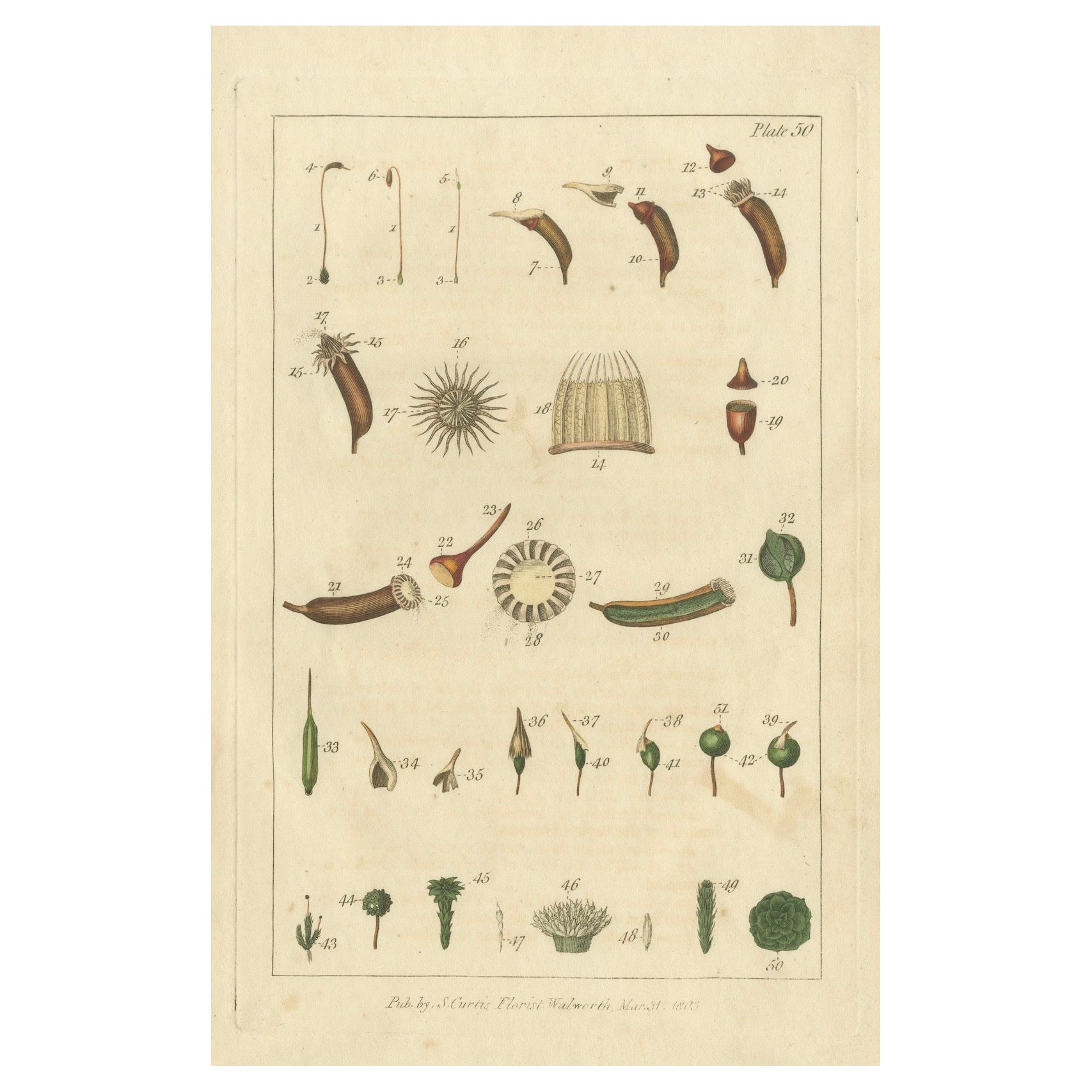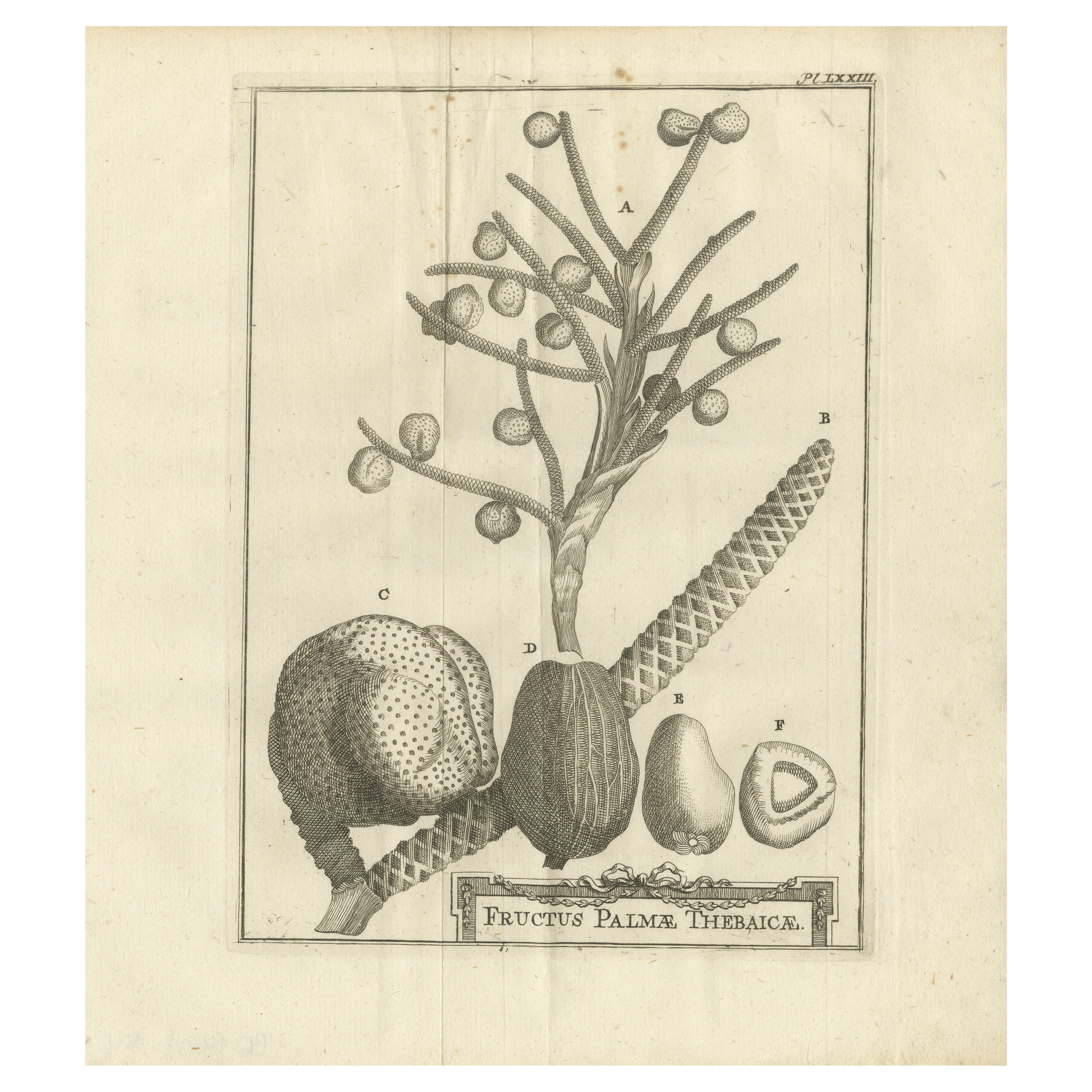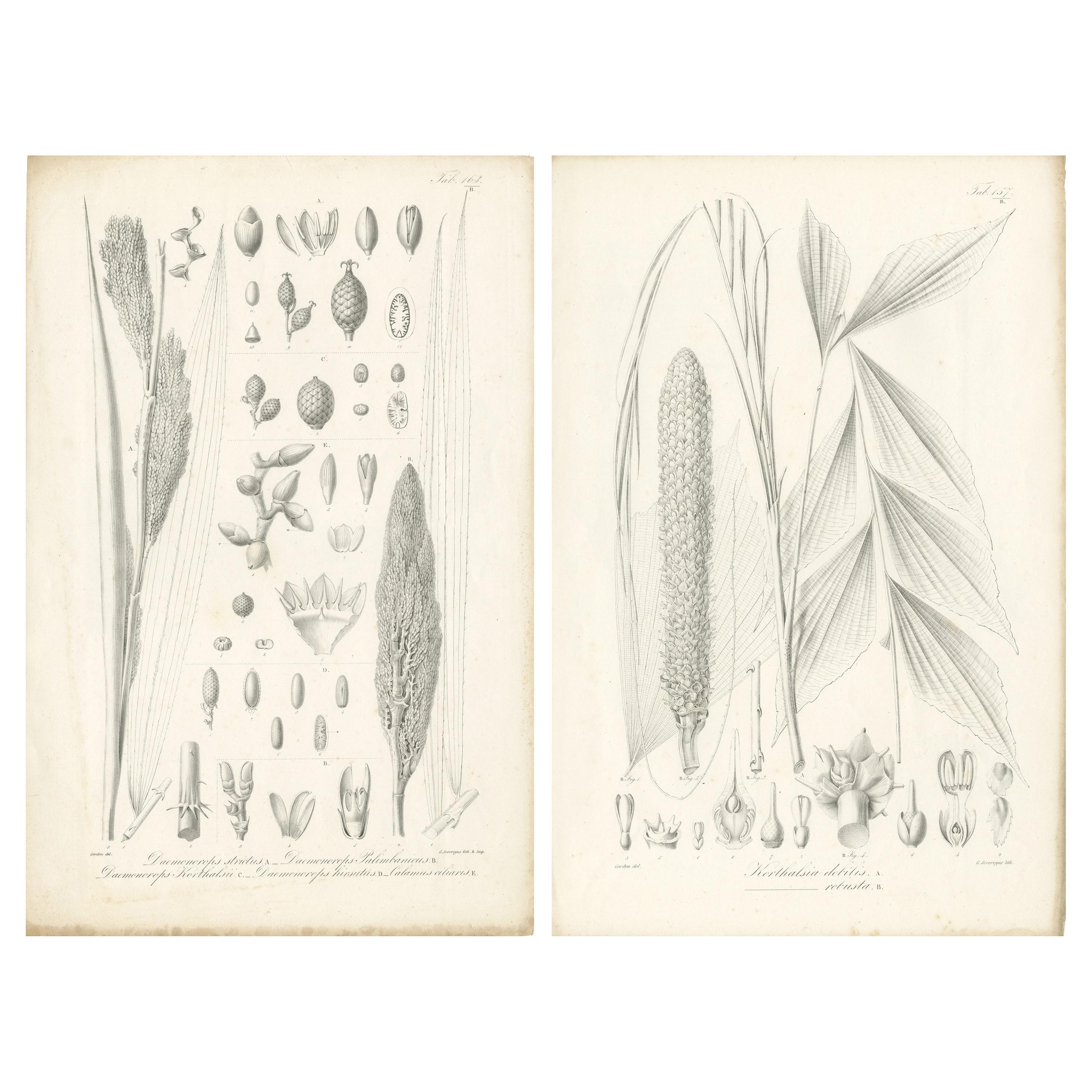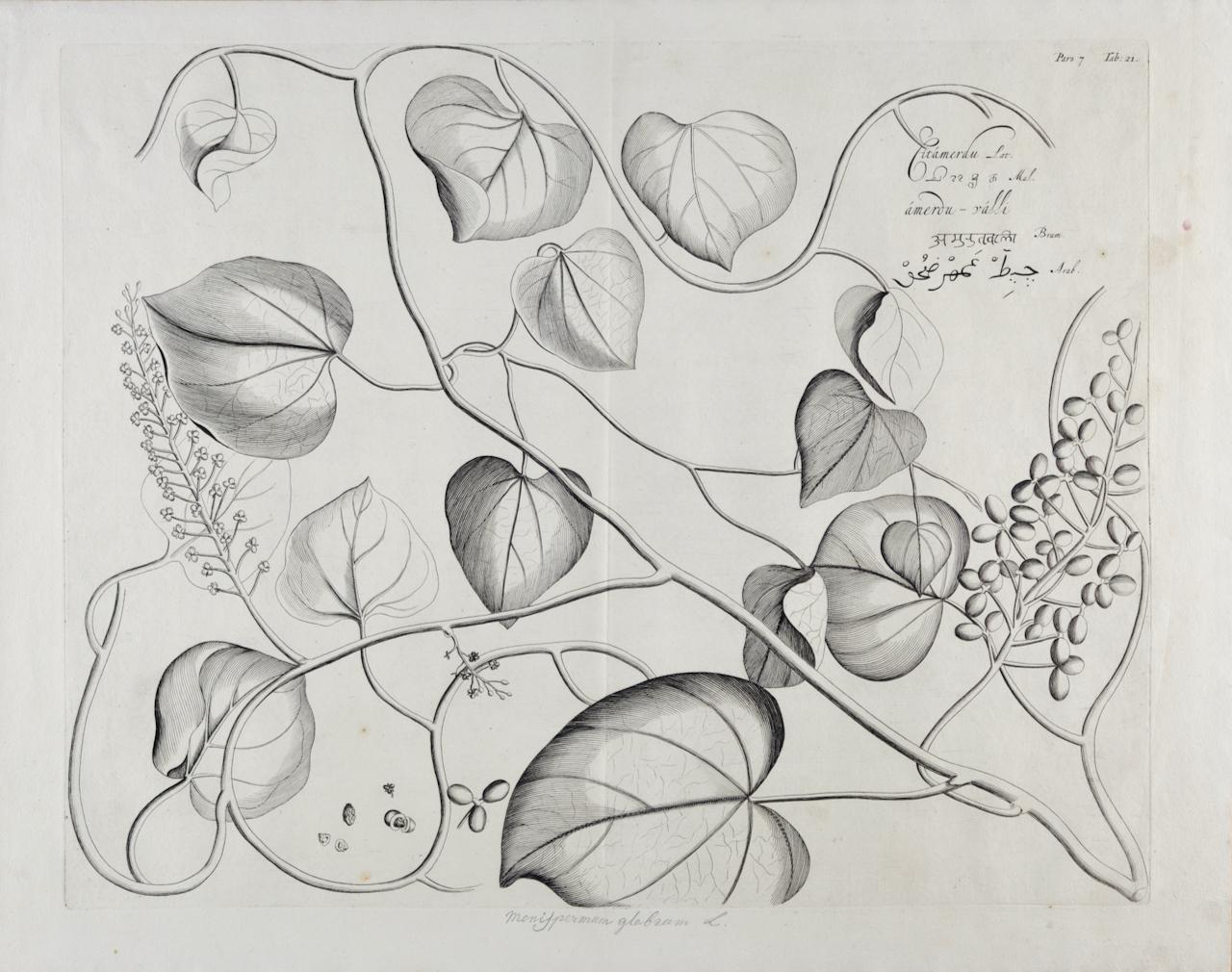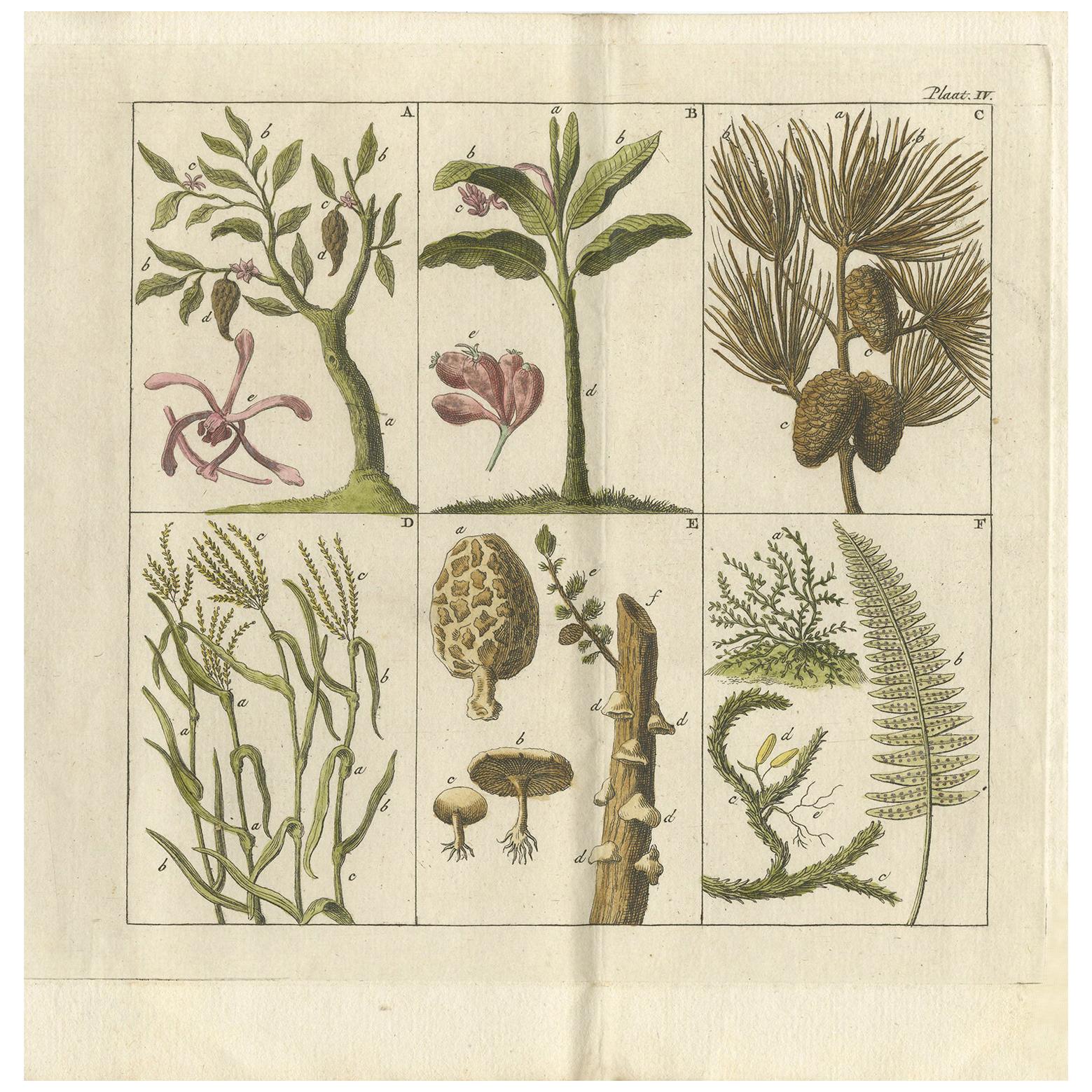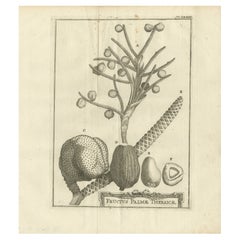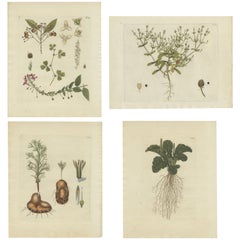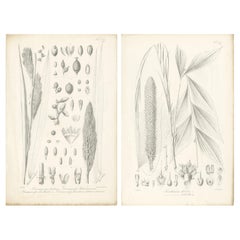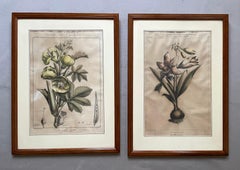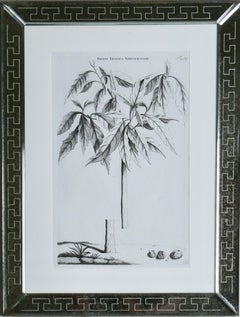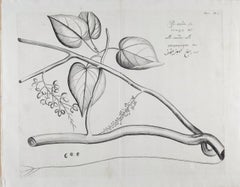Items Similar to Egyptian Plants – Botanical Studies of Flora from Egypt, c.1776
Want more images or videos?
Request additional images or videos from the seller
1 of 10
Egyptian Plants – Botanical Studies of Flora from Egypt, c.1776
$314.60
£237.27
€270
CA$434.96
A$487.23
CHF 255.91
MX$5,924.60
NOK 3,240.69
SEK 3,076.29
DKK 2,055.42
About the Item
Egyptian Plants – Botanical Studies of Flora from Egypt, c.1776
This set of three antique engravings presents a rich botanical overview of plants native to Egypt, rendered with remarkable detail and scientific precision. These illustrations originate from an 18th-century Dutch or German natural history publication, likely dating to around 1776, when European interest in Egyptian flora and fauna was at its height due to increased exploration and colonial influence.
The left print (Pl. LXXXIV) is titled "Egyptische Planten" and features three tall and slender plant species:
1. Abutilon (a mallow genus known for its soft leaves)
2. Caprileum (likely Capparis spinosa, or caper bush)
3. Fuirenkinum Orientale (possibly a reference to a grass-like or sedge plant)
Each is illustrated in full height with delicate linework showing the textures of stems, seed pods, and foliage.
The central print (Pl. LXXII) focuses on the *Palma Thebaica*, or Theban Date Palm. The centerpiece is a large fan-like palm frond (marked G), accompanied by a traditional woven date basket and sections of palm trunk and branches. In the background are two other desert shrubs (H and K), suggesting the ecological context of the plant in Egypt’s arid zones.
The right print (Pl. LXXIV) continues with additional specimens labeled "Vervolg der Egyptische Planten" (Continuation of Egyptian Plants). It includes:
4\. Celsia Orientalis
5\. Lunaria Truleane
6\. Jacobaea Ægyptiaca (likely a local species of ragwort or groundsel)
7\. Aristida Orientalis (a desert grass or ornamental type)
These prints serve both as early scientific documentation and as aesthetic representations of Egypt’s diverse vegetation. Such plates were vital for European botanists cataloging new species and understanding regional ecosystems during the Enlightenment.
Condition report: Good impressions with full plate marks. Mild age toning and some minor creasing near margins. Vertical centerfolds as issued. Paper is clean and strong.
Framing tips: A natural wood or olive-toned frame pairs beautifully with these plates. Use an off-white or sand-colored mat to enhance the antique botanical feel and allow each plant’s detail to stand out.
Technique: Engraving
Maker: Anonymous, Dutch or German school, circa 1776
- Dimensions:Height: 10.75 in (27.3 cm)Width: 9.85 in (25 cm)Depth: 0.01 in (0.2 mm)
- Materials and Techniques:Paper,Engraved
- Place of Origin:
- Period:
- Date of Manufacture:1776
- Condition:Condition report: Good impressions with full plate marks. Mild age toning and some minor creasing near margins. Vertical centerfolds as issued. Paper is clean and strong.
- Seller Location:Langweer, NL
- Reference Number:Seller: BG-14102-55, -56, -571stDibs: LU3054346051062
About the Seller
5.0
Recognized Seller
These prestigious sellers are industry leaders and represent the highest echelon for item quality and design.
Platinum Seller
Premium sellers with a 4.7+ rating and 24-hour response times
Established in 2009
1stDibs seller since 2017
2,517 sales on 1stDibs
Typical response time: <1 hour
- ShippingRetrieving quote...Shipping from: Langweer, Netherlands
- Return Policy
Authenticity Guarantee
In the unlikely event there’s an issue with an item’s authenticity, contact us within 1 year for a full refund. DetailsMoney-Back Guarantee
If your item is not as described, is damaged in transit, or does not arrive, contact us within 7 days for a full refund. Details24-Hour Cancellation
You have a 24-hour grace period in which to reconsider your purchase, with no questions asked.Vetted Professional Sellers
Our world-class sellers must adhere to strict standards for service and quality, maintaining the integrity of our listings.Price-Match Guarantee
If you find that a seller listed the same item for a lower price elsewhere, we’ll match it.Trusted Global Delivery
Our best-in-class carrier network provides specialized shipping options worldwide, including custom delivery.More From This Seller
View AllBotanical Study of Various Plant Structures in an Original Engraving, 1803
Located in Langweer, NL
Botanical Study of Various Plant Structures
This engraving is from the publication "Flora Londinensis," an illustrated work detailing the flora found around London. The specific pla...
Category
Antique Early 1800s Prints
Materials
Paper
$130 Sale Price
20% Off
Fruits of the Theban Palm – Botanical Study of Date Palm Egypt c.1776
Located in Langweer, NL
Fruits of the Theban Palm – Botanical Study of Date Palm Egypt c.1776
Description:
This antique botanical engraving, titled "Fructus Palmæ Thebaicæ," offers a striking and detailed ...
Category
Antique Late 18th Century Dutch Prints
Materials
Paper
Set of 4 Antique Prints of Various Plants by Jacquin, 'c.1790'
Located in Langweer, NL
Set of four antique prints illustrating various plants. These prints originate from 'Collectanea Austriaca' by N.J. Jacquin. Published between 1786 and 1796.
Category
Antique Late 18th Century Prints
Materials
Paper
$466 Sale Price / set
20% Off
Set of 2 Botany Prints of Palm Species by Blume 'c.1840'
Located in Langweer, NL
Set of two antique prints:
1) Korthalsia debilis, Korthalsia robusta (flowering plants in the palm family)
2) Daemonorops strictus, Daemonorops Palimbanicus etc. (palm species)
Thes...
Category
Antique Mid-19th Century Prints
Materials
Paper
$279 Sale Price / set
20% Off
Antique Botany Print of Various Trees, Mushrooms and Ferns '1808'
Located in Langweer, NL
Antique botany print of the A) cocoa tree B) banana tree c) pine tree D) fraxinus ornus E) mushrooms F) ferns. This print originates from 'Aanhangsel tot de vier deelen van den Katec...
Category
Antique Early 19th Century Prints
Materials
Paper
$233 Sale Price
20% Off
Botanical Elegance: Antique Engravings from Johann Weinmann's Masterpiece, 1748
Located in Langweer, NL
Artist or Maker: Johann Wilhelm Weinmann
Title: "Lilium album peregrinum. Lilium buliferum, Knöpfigte Feuer Lilien. Lilium croceum minus, Feuer Lilien."
Medium: Colored etching
Catal...
Category
Antique 1740s Prints
Materials
Paper
$736 Sale Price
20% Off
Free Shipping
You May Also Like
Citamerdu (Amrita) Plant: 17th Century Botanical Engraving by Hendrik van Rheede
Located in Alamo, CA
This is a rare 17th century engraving of a plant entitled "Citamerdu" by the Dutch botanist Hendrik van Rheede tot Drakenstein, plate 21 from his 'Hortus Indicus Malabaricus' (Garden of Malabar), published in Amsterdam in 1686 by Johann van Someren. The engraving depicts the Citamerdu plant, also known as Tinospora cordifolia plant or Amrita and Guduchi. It is a deciduous plant with heart-shaped leaves, greenish flowers, and pea-shaped fruits. Rheede's 19th century publication featured illustrations of exotic plants and fruits labelled with script in the upper right corner in Latin, Malay, Arabic, and Sanskrit. Hortus Indicus Malabaricus is believed to be the earliest comprehensive published work on the flora of Asia and the tropics. The 17th century treatise featured important illustrations of 740 plants of the region, including Indian medicinal plants.
The engraving is printed on 17th century laid, chain-linked paper, watermarked with an elaborate crown design. The sheet measures 15.75" high by 18.75" wide. There is a central fold, as issued. There are a few small spots, but the print is otherwise in excellent condition.
There are additional Rheede botanical engravings from his 'Hortus Indicus Malabaricus' publication that are listed on my 1stdibs storefront and online website. These would make for an impressive display grouping. A discount is available for purchase of two or more of the prints.
Hendrik Adriaan van...
Category
Late 17th Century Naturalistic Landscape Prints
Materials
Engraving
Two Botanical Lithographs, Flora Of America
Located in SAINT-OUEN-SUR-SEINE, FR
Étienne DENISSE (1785-1861)
Gombeau Edible and Trompette.
Collection of the most remarkable Flowers and Fruits, natural size.
Two lithographs enhanced with watercolor.
Around 1830.
F...
Category
1830s Figurative Prints
Materials
Paper, Watercolor
Jan & Caspar Commelin: 17th Century Botanical Engravings, 1st Edition
By Jan & Caspar Commelin
Located in Richmond, GB
""Horti Medici Amstelodamensis Rariorum"" (Rarities of the Amsterdam Physic Garden),
1st edition, 1697 - 1701. ( Ref: Dunthorne: 81)
Jan Commelin (1629-1692) was Director of the Am...
Category
17th Century Paintings
Materials
Silver
Pee-amerdu Plant: A Rare 17th Century Botanical Engraving by H. van Rheede
Located in Alamo, CA
This is a rare 17th century engraving of a plant entitled "Pee-amerdu" by the Dutch botanist Hendrik van Rheede tot Drakenstein, plate 19 from his 'Hortus Indicus Malabaricus' (Garden of Malabar), published in Amsterdam in 1686 by Johann van Someren. The engraving depicts the Pee-amerdu plant, a large leafed plant climbing plant off the Malabar Coast in India. The plant is noted for its medicinal uses. It may be related to Tinospora species. Rheede's 19th century publication featured illustrations of exotic plants and fruits labelled with script in the upper right corner in Latin, Malay, Arabic, and Sanskrit. Hortus Indicus Malabaricus is believed to be the earliest comprehensive published work on the flora of Asia and the tropics. The 17th century treatise featured important illustrations of 740 plants of the region, including Indian medicinal plants.
The engraving is printed on 17th century laid, chain-linked watermarked paper. The sheet measures 14.88" high by 18.75" wide. There is a central fold, as issued. There are a few faint smudges, a spot in the upper margin and there is minimal irregularity of the left edge of the paper where the print was previously bound in the 17th century publication. The print is otherwise in very good condition.
There are additional Rheede botanical engravings from his 'Hortus Indicus Malabaricus' publication that are listed on my 1stdibs storefront and online website. These would make for an impressive display grouping. A discount is available for purchase of two or more of the prints.
Hendrik Adriaan van Rheede tot Drakenstein...
Category
Late 17th Century Naturalistic Landscape Prints
Materials
Engraving
Robert Béenard (1734-1794) - 18th Century Engraving, Le Pivre & Le Betel
Located in Corsham, GB
Well presented in a simple mahogany frame and cream mount. On wove.
Category
Early 18th Century Still-life Prints
Materials
Engraving
Two 18th Century Hand Colored Botanical Engraving of Plants from (1771)
Located in Stockholm, SE
Adorning the walls, two gracefully framed botanical engravings from 1771 capture nature's elegance in exquisite detail. Delicate strokes of...
Category
Antique 1770s European George III Decorative Art
Materials
Paper
